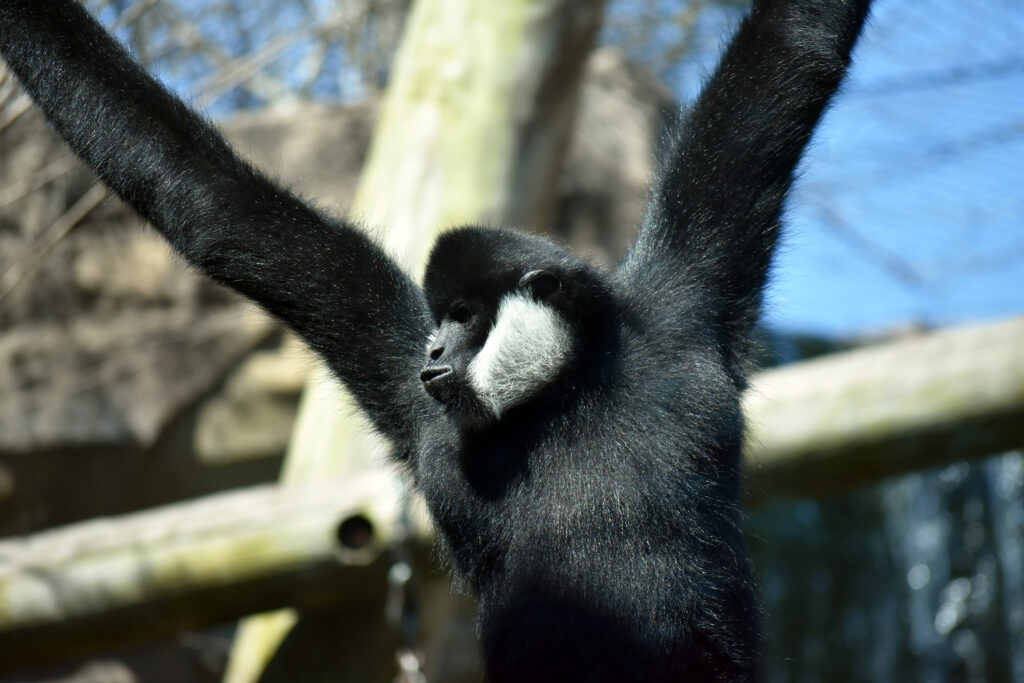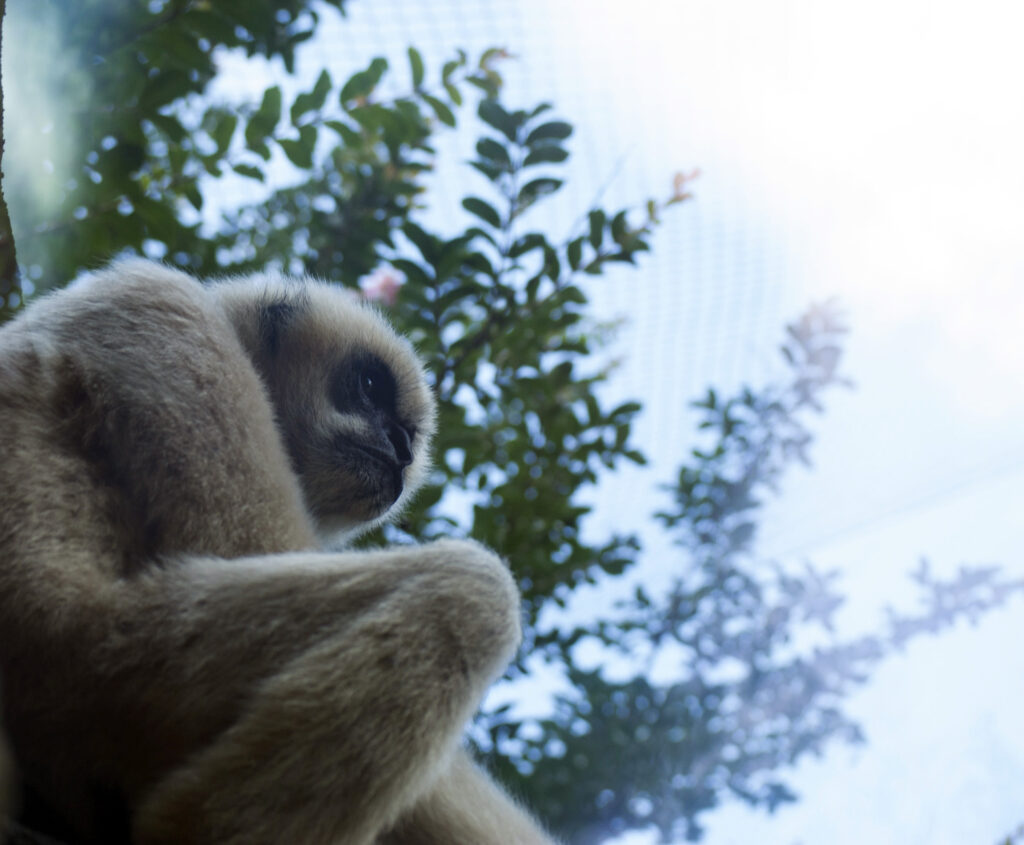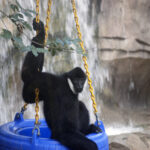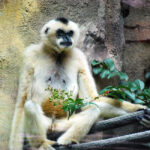Feeling Cheeky
White-cheeked gibbons are lesser apes, not monkeys; lesser apes differ from great apes such as orangutans and gorillas in that they are smaller, lack sexual dimorphisim and do not build nests. These gibbons have some unique facts about them that you should learn, including the obvious – their coloration.

White-cheeked gibbon infants are all beige in color. Around one year old, all are black with white cheeks. At age five to seven, the mature males remain black while the females change back to beige.
White-cheeked gibbons are primarily arboreal, spending their time in the canopy of the trees in their native tropical rainforest habitats in Laos, Vietnam and southern China. The apes live in pairs or groups consisting of one pair and their offspring. After a seven-month gestation period, gibbons will give birth to one infant that will become independent at age three, sexually mature at six, and will often leave its parents after eight to 10 years.

Unfortunately, some infants are taken from their families for sale in the illegal pet trade before they are ready to leave their family. While poaching is considered a major threat to this species, habitat destruction is the main reason this species has declined by more than 80 percent in the last 45 years. The forests the critically endangered primates thrive in is being destructed to extract timber or to convert the land into palm oil farms.
The Virginia Zoo contributes to conservation programs that protect the habitats of this primate species, as well as other apes like orangutans. During Halloween and for ZooBoo, the Zoo also purchases candy that is palm-oil free or is approved by the Roundtable for Sustainable Palm Oil (RSPO), which ensures the palm oil is harvested sustainably, not affecting any animals’ habitats.
A pair of white-cheeked gibbons reside along the Zoo’s Asia – Trail of the Tiger with a pair of Asian small-clawed otters. The pair are not a breeding pair due to the female’s age, but they are bonded, meaning they spend most of their time together or are always in view of one another. Grooming is a popular joint activity for the pair
 Dexter is the Zoo’s 22-year-old male. Prior to coming to the Virginia Zoo in 2010, he was at the Fort Wayne Children’s Zoo, but was born at the Gibbon Conservation Center in California. Keepers say Dexter can be shy around new staff but loves showing off in front of Zoo visitors. He can often be seen watching guests, playing with the otters or engaging with enrichment items he can toss around such as tennis balls or Kong toys.
Dexter is the Zoo’s 22-year-old male. Prior to coming to the Virginia Zoo in 2010, he was at the Fort Wayne Children’s Zoo, but was born at the Gibbon Conservation Center in California. Keepers say Dexter can be shy around new staff but loves showing off in front of Zoo visitors. He can often be seen watching guests, playing with the otters or engaging with enrichment items he can toss around such as tennis balls or Kong toys.
 Asia is the second-oldest animal at the Zoo, with her age estimated at around 45 years old. She was born at the Moscow Zoo, then moved to the Gibbon Conservation Center and the Fort Wayne Children’s Zoo before arriving at the Virginia Zoo in 2010. Asia still has a lot of spirit left in her swing and can often be seen hanging out in the highest branches. When she isn’t scoping out her territory in the tree top, she enjoys napping or enrichment such as food hidden in paper bags.
Asia is the second-oldest animal at the Zoo, with her age estimated at around 45 years old. She was born at the Moscow Zoo, then moved to the Gibbon Conservation Center and the Fort Wayne Children’s Zoo before arriving at the Virginia Zoo in 2010. Asia still has a lot of spirit left in her swing and can often be seen hanging out in the highest branches. When she isn’t scoping out her territory in the tree top, she enjoys napping or enrichment such as food hidden in paper bags.
Be sure to stop by Asia and Dexter’s shared exhibit with the otters to see what everyone is up to!